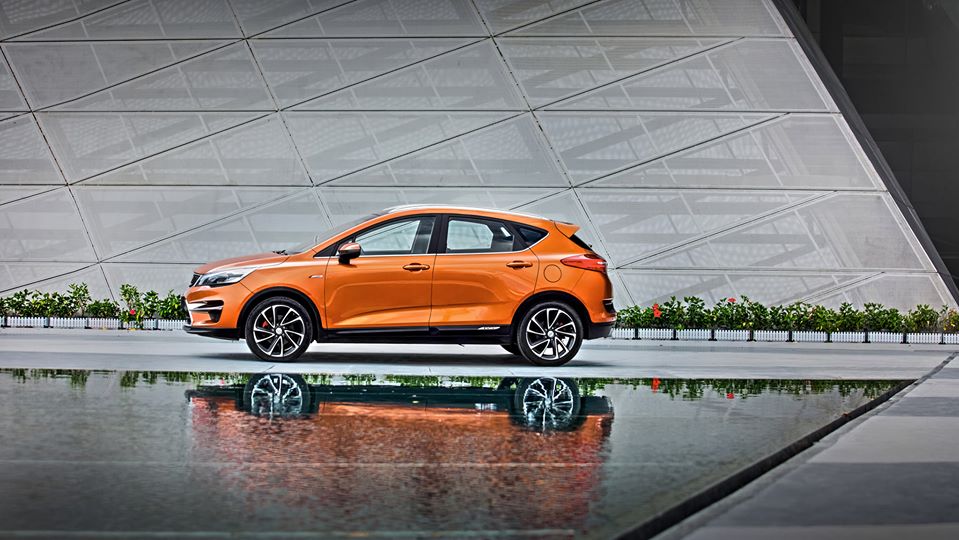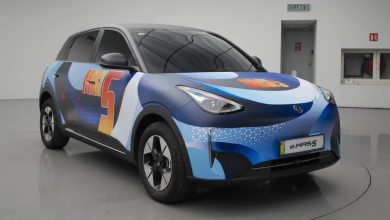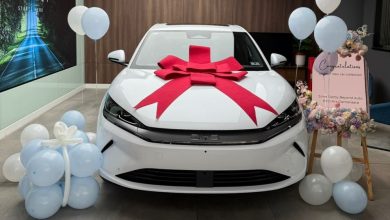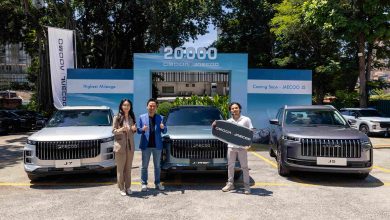Geely’s CEVT Center CEO Interview

An interview with the CEO of CEVT China Euro Vehicle Technology, which is the global innovation centre for Geely and the birthplace of the Compact Modular Architecture.
How did you come into Geely?
When Geely acquired Volvo Cars in 2010, Li Shufu’s vision for the group was to become a global automotive enterprise. At the time, the group had two brands, Geely Auto and Volvo Cars, but only one vehicle architecture that could meet global requirements, the SPA architecture that Volvo was about to finalize. Geely Auto’s models were more or less point designs on a variety of different platforms, so Chairman Li challenged both brands to develop another highly flexible architecture for smaller vehicles in the C-segment that both brands could use to fit their unique brand positioning.

As many may remember, during the early 2010s, the global automotive industry went through a difficult period with many companies going under. For either of the brands, Geely Auto or Volvo Cars to develop a new architecture would be difficult alone because of resource constraints. However even in turbulent times, opportunity abounds.
![]()
At the time, I had just joined Volvo Cars after years of being head of R&D at Saab and GM Europe. As GM was forced to unwind their business in Europe due to their financial troubles, over 1,200 talented engineers were suddenly available, many of whom I knew personally. I felt maybe this could be a good opportunity if we could quickly bring together the right resources and talent we could develop a new architecture. This was approved by Mr. An Conghui of Geely Auto and Håkan Samuelsson of Volvo and I was given the task of putting together a new R&D center. I started with a blank sheet of paper and started building up an organization to develop a new global C-segment architecture which later became the CMA – Compact Modular Architecture. This is how I joined Geely and how CEVT was born.

In R&D, people are the most critical factor. How was CEVT team formed?
As a foundation we had a lot of good people from Volvo Cars and Geely to support us. I also knew many people from around the world because of my 20 year experience in the industry. During the spring 2013, we managed to get very talented people that were from other OEMs: BMW, Volkswagen, Japanese companies, Korean companies, in addition to Ford and General Motors. Being able to do something from a blank sheet of paper and doing something totally new without any baggage from the past was very interesting for many folks.
Diversity at CEVT
We’ve built a very diverse team with over 30 different nationalities at CEVT, each with different experiences and cultures, which really gave us a unique opportunity to truly create a global product. The timing with SAAB closing and other OEMs downsizing, which of course was sad, also meant that we had a lot of very capable automotive engineers available. Working hard, we have been able to stay agile and innovative without any heavy legacy dragging us down.
How were you able to integrate two different cultures, Chinese and Swedish, at CEVT?
When I explain to people here the difference between the Geely culture and Swedish or typical western culture, I compare it to a journey. This is like traveling from Gothenburg to Stockholm. When you tell the Swedish team here, a typical Swedish or western team, you are going to go to Stockholm, the first thing that happens is people ask you a question, “OK, why should we go to Stockholm?” This is because they want to understand why first and then they start to plan. They do all the detailed planning before making a move.
In Geely, it’s the opposite. They jump into the car and start driving immediately. While driving they figure out the details, what route to take, where to get gas, etc. The reason why they jump into the car immediately is that they know after five minutes they are going to get a new call. The boss is going to ask them, “Have you started?” There we have a confusion, this pace was something we had to get used to. Now we know, when a decision has been made, make sure you start immediately and be flexible along the way.
To be honest, I had very little experience with Geely’s R&D or Chinese culture before joining Geely. Today, I’m impressed at the speed we’re developing new technologies and products and the work that is done at CEVT.
How difficult was it to create a whole new vehicle architecture for two distinct brands?
It was difficult to begin with, but we worked around many of the issues that we have seen.
Volvo Cars has perhaps the longest vehicle specification list I’ve ever seen. I have never seen requirements so specific and descriptions as long as Volvo ones, which is probably why they’ve made great cars for so many years!
It’s like an old telephone book filled with requirements. In the early days, compared to Volvo, Geely had very few requirements. We had an interesting experience getting to understand what Geely needed. Geely’s requirements were very broad and heavily based on what the customers need, and Chinese consumers were always changing with huge leaps in technology every couple of years.
We knew how to develop a car, we knew how to develop an architecture and we had people who have done that several times. However, knowing what you’re building and who you’re building it for, were of course some of the most important things we had to figure out first.
CMA had to span a wide range of needs, so it was designed to be highly modular so that the designers of the “top hat” could vary the length, weight, and the height to support sedans, hatchbacks, wagons, cross-overs, SUVs. For example, with a fixed modular interface, nine different rear suspensions with 80% common parts could be attached. The heating, ventilating, and air conditioning (HVAC) system used a common housing with a selection of components that would allow everything from a one-zone manual system to a four-zone fully automatic system with air filtration.
How does CMA compare to other architecture and what changes has it brought to Geely?
CMA has the potential to be the most used architecture in the world. That is because we can tune it to accommodate many brands within the Geely Holding family. With Lynk & Co models receiving top scores in safety and quality and being able to sell over 120,000 units in its first year, as well as the success of Volvo XC40, I think it’s safe to say we are doing something right.
For Geely, having a modular architecture made it possible to widen their customer segment using scalable technology. The modular nature of the architecture means it can be used to create vehicles that fit each brands requirement as luxury, premium or mass market and also allows for each brand to create vehicles based on their market segmentation, i.e. MPV, Sedan, SUV or crossover. The flexibility of CMA also allows for multiple powertrain options, including pure gasoline, plug-in hybrid, mild hybrid and pure electric solutions.
For us, the success of the CMA and being able to complete the first edition of the architecture in just three year is a testament to our team’s talent and experience and something Geely has long been known for, Geely speed.
Without a heavy legacy, we’re able to move fast, implement new technologies and build state of the art facilities from the beginning. Working on CMA, I’ve become impressed by the rate in which Chinese automotive R&D and especially Geely are adopting new technologies and dare to take chances. Being a part of Geely, a Chinese global automotive enterprise, have given us the ability to stay agile and innovative, the ability to challenge the future.




